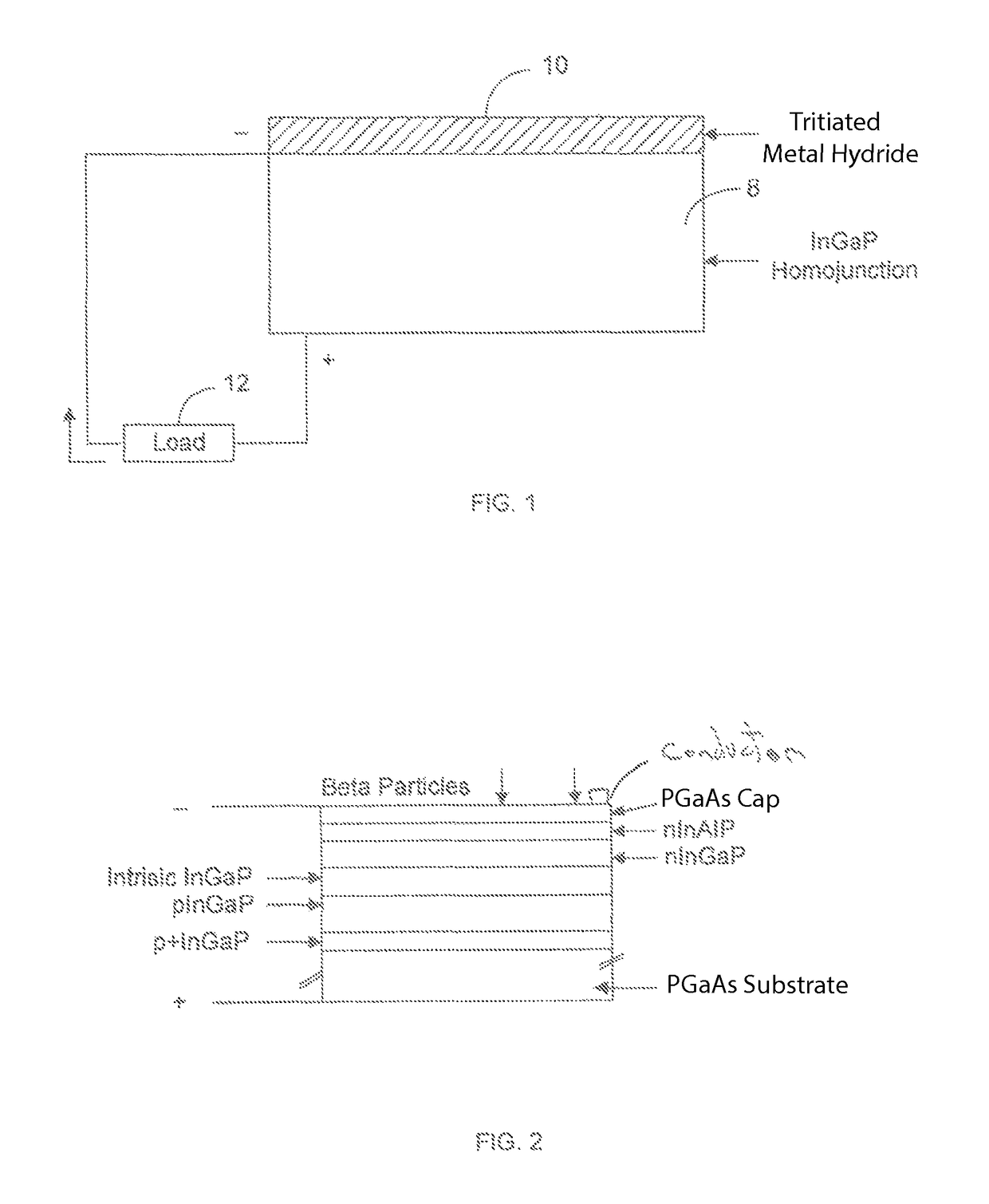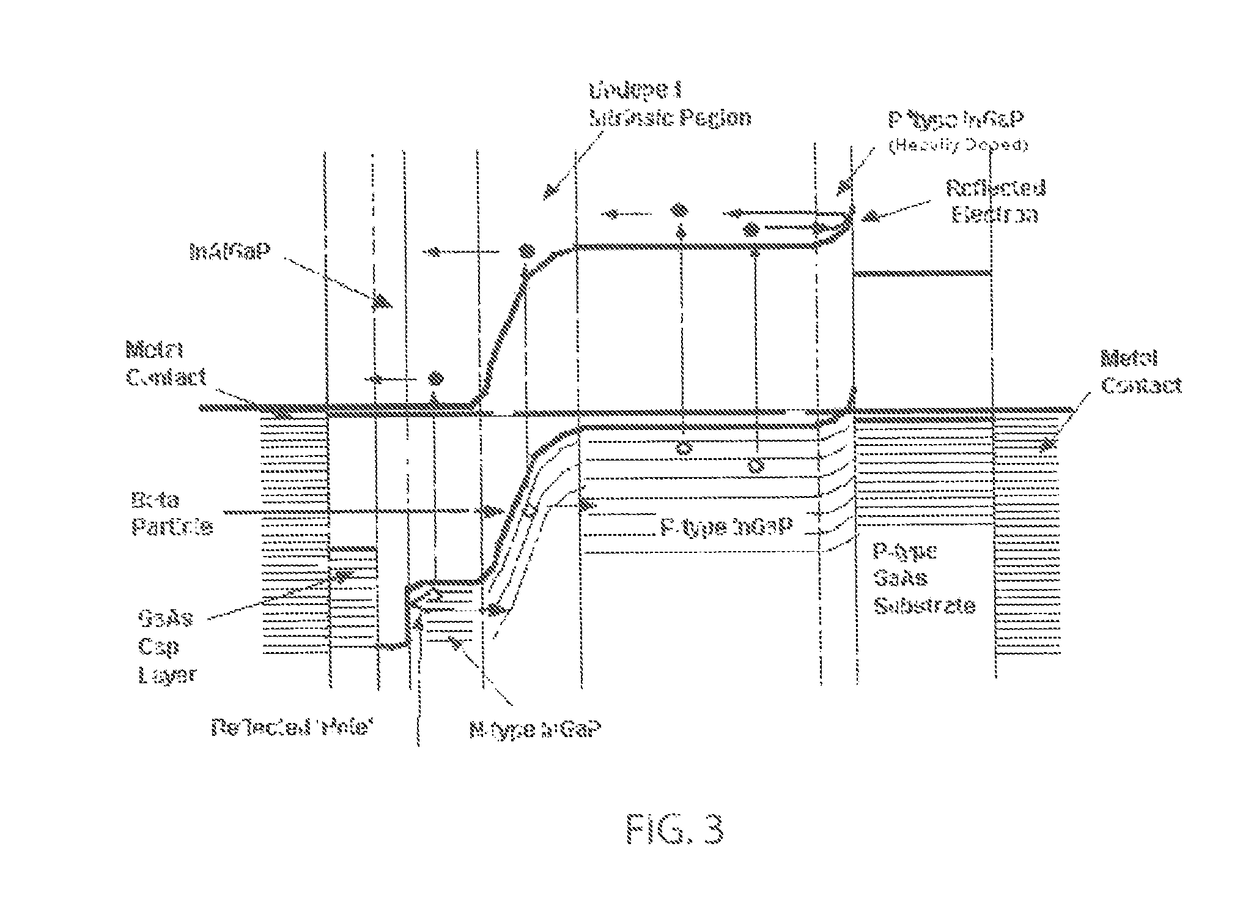Tritium direct conversion semiconductor device for use with gallium arsenide or germanium substrates
a technology of germanium substrates and semiconductor devices, which is applied in semiconductor devices, radiation electrical energy, nuclear engineering, etc., can solve the problems of difficult to efficiently convert tritium beta emissions into usable electrical power, radiation energy may also be harmful to operators in the vicinity of batteries, and low energy of tritium beta emissions
- Summary
- Abstract
- Description
- Claims
- Application Information
AI Technical Summary
Benefits of technology
Problems solved by technology
Method used
Image
Examples
Embodiment Construction
[0043]Before describing in detail the particular methods and apparatuses related to tritium direct conversion semiconductor devices, it should be observed that the present invention resides primarily in a novel and non-obvious combination of elements and process steps. So as not to obscure the disclosure with details that will be readily apparent to those skilled in the art, certain conventional elements and steps have been presented with lesser detail, while the drawings and the specification describe in greater detail other elements and steps pertinent to understanding the invention.
[0044]The following embodiments are not intended to define limits as to the structure or method of the invention, but only to provide exemplary constructions. The embodiments are permissive rather than mandatory and illustrative rather than exhaustive.
[0045]The present invention relates to a tritium direct conversion semiconductor device comprised of a single crystal semiconductor and a device structur...
PUM
 Login to View More
Login to View More Abstract
Description
Claims
Application Information
 Login to View More
Login to View More - R&D
- Intellectual Property
- Life Sciences
- Materials
- Tech Scout
- Unparalleled Data Quality
- Higher Quality Content
- 60% Fewer Hallucinations
Browse by: Latest US Patents, China's latest patents, Technical Efficacy Thesaurus, Application Domain, Technology Topic, Popular Technical Reports.
© 2025 PatSnap. All rights reserved.Legal|Privacy policy|Modern Slavery Act Transparency Statement|Sitemap|About US| Contact US: help@patsnap.com



